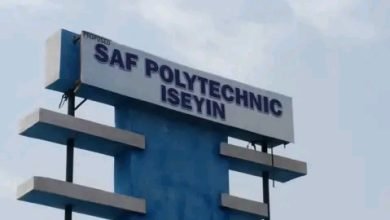A Look at Nigeria’s Education System
The education system in Nigeria has been through a series of upheavals, transformations, and reforms since the country gained its independence in 1960.
The Nigerian education system has faced several challenges that have hindered its progress and development.
Despite some positive strides in recent years, Nigeria is still grappling with a dysfunctional education system.
This article seeks to provide an in-depth analysis of Nigeria’s education system by examining its history, structure, problems, and solutions.
History of Nigeria’s Education System
Prior to the arrival of the British in the 19th century, the education system in Nigeria was informal, and it focused primarily on religious and cultural practices.
The British colonial government introduced a Western-style education system in Nigeria in the late 19th century. The aim was to train and educate Nigerians who could assist in the colonial administration.
The curriculum of the education system was designed to cater to the needs of the colonial government, and it lacked relevance to the life of the average Nigerian.
Nigeria, at independence in 1960, inherited an education system that was essentially an extension of the colonial era system.
The federal government of Nigeria established the Ministry of Education in 1952 with the objective of improving the education system.
However, successive governments have not been able to make significant progress in transforming the education system.
Structure of Nigeria’s Education System
Nigeria’s education system is divided into three levels; primary education, secondary education, and tertiary education.
Primary education is the first level of formal education, and it is intended for children between the ages of six and eleven.
The duration of primary education is six years. Secondary education follows primary education and is generally divided into two tiers.
The junior secondary school, which lasts for three years, is followed by the senior secondary school, which lasts for another three years.
The curriculum at both levels of secondary education is structured in such a way as to prepare students for further studies in tertiary institutions.
At the tertiary level, there are universities, polytechnics, and colleges of education. The universities offer degree programs, while the polytechnics offer diploma and certificate programs.
Colleges of education, on the other hand, are designed to train teachers for primary and secondary schools.
Problems with Nigeria’s Education System
Many factors are contributing to the poor performance of Nigeria’s education system.
Inadequate funding is one of the major challenges of the system. The Nigerian government has consistently allocated a meager budget to the education sector.
The UNESCO benchmark for government spending on education is 26 percent of the total budget.
However, Nigeria has consistently allocated less than 10 percent of its budget to education.
The poor state of infrastructure is another challenge. Most schools in Nigeria lack basic amenities such as electricity, clean water, and classroom furniture.
The poor state of infrastructure has contributed to poor learning outcomes, low enrollment, and poor student retention.
Another problem is the poor quality of teachers. Many teachers in Nigeria are untrained, and those who are trained often lack the necessary skills and motivation to teach effectively.
Additionally, the teacher-student ratio in Nigeria is unfavorable, with an average of 80 students to one teacher.
The curriculum of Nigeria’s education system has also been criticized for being too theoretical and lacking in practical skills.
Students learn primarily by memorization and few opportunities are provided for students to acquire practical skills relevant to their field of study.
This has resulted in a mismatch between the skills required by the labor market and the skills of graduates from Nigerian universities.
Solutions to Nigeria’s Education System
Several recommendations have been proposed to address the problems facing Nigeria’s education system.
One solution is to increase funding to the sector. This would enable the provision of adequate infrastructure, training and development of teachers, and the provision of better learning materials.
Another solution is the reform of the curriculum to make it more practical-oriented.
The current curriculum should incorporate vocational training programs and entrepreneurial skills development.
This would equip students with the necessary skills and knowledge to start small businesses, and contribute to the country’s economic growth.









